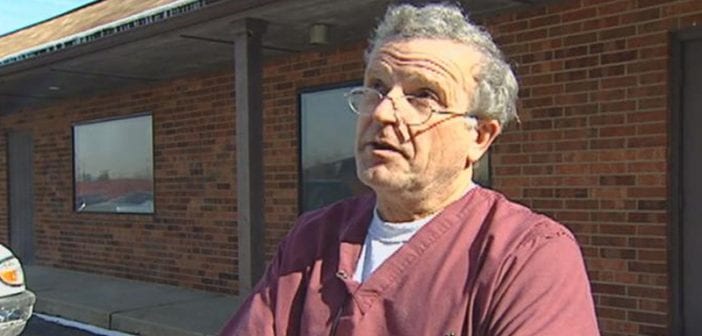Earlier this month, abortionist Ulrich Klopfer passed away. His family found the bodies of thousands of abortion victims in his Will County, Illinois, home after his death, a gruesome reminder of the human death toll of abortion. According to WSBT, officials say that 2,246 bodies of preborn babies were found in Klopfer’s home. Klopfer committed abortions in South Bend, Fort Wayne, and Gary, Indiana, until his license was suspended in 2015.
When Klopfer’s family discovered the more than 2,000 medically preserved human remains, they contacted authorities. WNDU reports an attorney representing the family contacted authorities and requested “proper removal.” According to reports, there is no evidence that Klopfer committed abortions in his home.
Jackie Appleman, executive director of Saint Joseph County Right to Life, told WNDU the Pro-Life group will work with officials to ensure that the bodies receive a proper burial. Appleman added that the community was shocked by the gruesome discovery, saying, “Thousands of women are impacted by what Klopfer did to them… He has their children in his garage, and so I want to offer a note of hope and healing.”
Pro-Life groups, unlike abortion groups, offer care for the emotional and spiritual trauma that abortion can inflict on mothers. In the aftermath of the discovery in Illinois, post-abortive mothers need to know that there is healing after abortion — a truth they will not find in the abortion industry.
Meanwhile, the abortion industry attempted the disingenuous approach of “Nothing to see here, folks.” Abortion business Whole Woman’s Health Alliance told WNDU they were “proud to serve the community with high-quality abortion care services that respect the dignity of women and families.” Even in so-called “high-quality” abortions, a baby in the womb is killed and the abortion business must find a means of disposing of the dead body. Klopfer is not the first abortionist to have a collection of aborted babies.
Despite this attempt at reassuring people that Klopfer is an anomaly and an outlier, there is evidence that many abortion businesses struggle to manage the piling carnage of abortion. Finding a reliable way to dispose of the mutilated is not easy, and abortion mills have been caught dumping babies in landfills, putting the bodies of aborted babies down garbage disposals, and stockpiling freezers full of dead bodies without a plan of how to bury or cremate the remains. Properly burying the remains cuts into the profits of the abortion business, and many medical waste companies refuse to work with abortion mills.
This problem of what to do with the bodies is not only one of recent years, but a perpetual issue for the killing industry in America. As Live Action reported in 1982, employees of a storage container company discovered the bodies of almost 17,000 babies in Los Angeles. When the storage container was repossessed for non-payment from a medical lab, workers made the horrific discovery. One witness said, “I couldn’t believe — just little bitty babies… all torn to pieces. The heads chopped off, arms, legs…It just makes you sick seeing something like that. Really, you know, makes you want to cry to see something like that.”
While abortion activists continue to rely on glib phrases like “choice” and “autonomy,” the physical reality of abortion is unavoidable to mothers who undergo the life-ending procedure and to workers in the abortion industry. The babies killed in abortion were living human beings, and their bodies remain as a testament to their brief lives cut short by unspeakable violence. This carnage must spur us on to ending the greatest injustice of our time.

